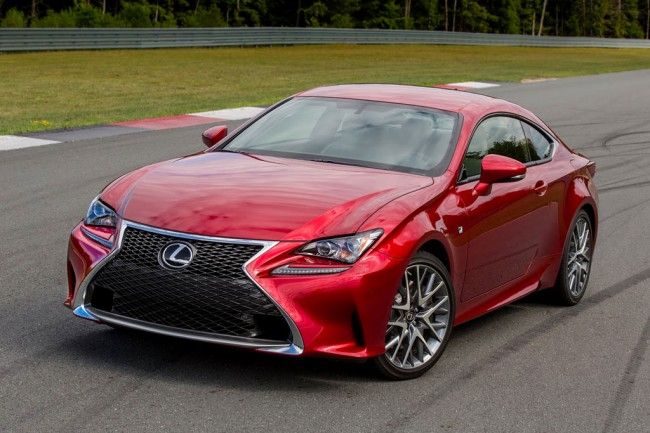
Suzuki Vitara S - climbing to the top of the offer
The new Vitara has been on the market for several months and has already managed to win the hearts of buyers. Now the top-of-the-line S version joins the lineup with an all-new engine from the Boosterjet series.
Suzuki is one of those brands that, instead of following the well-worn paths of long-established segmentation, is still looking for new ways, while trying not to forget their roots and what they are best at. In the case of this small Japanese brand, the results of the experiment are very different. The new Vitara can certainly be counted as a completely successful undertaking, which testifies to the huge popularity of the new model. In the nine months of 2015, almost 2,2 thousand units, making the Vitary the most popular Suzuki model.
If naming the SX4 S-Cross can be a pain in the ass, the new Vitar is clear. This is a representative of the B-segment crossovers, playing in the same league as the Opel Mokka, Skoda Yeti, Honda HR-V or Fiat 500X. What does he have to do with the outgoing Grand Vitara? Well, basically the name (or rather part of it) and the badge on the hood.
The old name for a completely new car, even smaller, is a familiar trick of many manufacturers. Because not only because the name is old, but also because it is known and recognizable all over the world. This makes it easier to get started and encourages journalists to make comparisons that in many cases don't make much sense. With the same success, you can compare the Land Cruiser V8 with the Land Cruiser Prado or Pajero with Pajero Sport. The name seems to be the same, but the structures are completely different.
The body of the new Vitar has a length of 4,17 m and a wheelbase of 2,5 m. Thus, it is clearly shorter than the SX4 S-Cross, which is 4,3 m long and has a wheelbase of 2,6 m. notice by comparing it with the outgoing namesake. The length of the five-door Grand Vitara is 4,5 meters, and the wheelbase is 2,64 meters.
Despite the small external dimensions, the Vitara interior is quite spacious. Four passengers can travel in comfortable conditions, with only a fifth person in the back it will be cramped. The trunk does not impress with its dimensions, offering a capacity of 375 liters. This is more or less what we can find in a mid-sized compact hatchback. In the Vitara, it is quite tall and provides the right shapes, although there are deep pockets on the sides of the raised floor that small items can get into. The floor hides a shallow stowage compartment where additional luggage can be placed. The back of the rear seat can be folded, then it forms a broken surface with the trunk floor.
Judging by the dimensions of the Vitary, it is located below the SX4 S-Cross. This can be seen not only in size, but also in the quality of the finish. Seeing it from the outside is not easy, but opening a mask or looking into certain nooks and crannies reveals a salutary approach. It's the same in the salon. The Vitary's trim materials are decidedly cheaper than those of the SX4 S-Cross, with soft finishes dominated by hard plastics with a rather average appearance. Luckily, the designers managed to bring in some interesting motifs, such as round vents with a centrally located clock, or a decorative stripe that can be painted the same color as the case.
An excellent option is a multimedia system using an 8-inch touch screen. The greatness lies in the fact that the screen responds with the speed we are used to on the screens of smartphones and tablets, and which is still lacking in many automotive systems. Suzuki has allowed the driver to control the on-board systems with the attention they need and with the confidence that their commands will be obeyed at the first touch.
S is for Super Vitar
The letter S primarily indicates the trim level. In the old days, a one-letter designation was often meant for poor performance, the Vitara is quite the opposite. The S is much better equipped than the XLED version.
Suzuki's stylists were tasked with making the S-ka stand out from the poorer versions. To this end, the appearance of the grille has been changed, giving it a shape known from the studio version of the iV-4. And that's not all, the 17-inch wheels are no longer polished like in XLED, but covered in trendy black. The exterior changes are crowned with satin-finished side mirror housings and red trim for LED headlight inserts. There are seven body colors and two two-tone options in the catalog (one of which is red with a black roof visible in the photos).
Since the XLED version has a lot of amenities, such as a multimedia system with navigation, heated seats and adaptive cruise control, there is not much to do in terms of comfort given the class of the car. Therefore, designers focused on decorative elements. As with the headlights, red has also appeared here. It covers the air vent frames, instrument cluster elements, as well as the red decorative thread on the sports steering wheel and gear lever knob. The last element that distinguishes the interior of the S from other Vitars are the aluminum pedals.
Red jewelry - oh.
just an addition, of course. In fact, the real novelty of the S version is the Boosterjet engine. After fifteen years of installing the naturally aspirated M16A petrol unit in a wide variety of specifications on almost all of its models, Suzuki has finally taken a step forward. The successor to this successful, albeit imperfect, engine was a slightly smaller supercharged engine.
Debuting in the Vitara, the Boosterjet has four cylinders that thankfully didn't have to be castrated. The working volume is 1373 cm3, the cylinder head has 16 valves, and the air in the combustion chambers is forced by a turbocharger. Power is 140 hp. at 5500 rpm and the maximum torque is an impressive 220 Nm, continuously available between 1500-4400 rpm. In comparison, the still available 1,6-liter engine offers 120 hp. power and 156 Nm of torque. Paired with a manual transmission, the Boosterjet is still content with an average of 5,2L/100km despite improved performance. This is only 0,1 liters less than the 1,6-liter naturally aspirated version, but with the Allgrip drive the difference increases to 0,4 liters.
The Boosterjet engine brings to the Vitar what has been lacking so far - a six-speed manual transmission. The "five", offered with the M16A, is already archaic and asks for another gear on the way. For the "lazy" there is an automatic transmission with six gears. This increases the price of the car by PLN 7. zloty.
Like a naturally aspirated engine, the Boosterjet can send power to the front axle, which will be appreciated by drivers who stay on the beaten path and are looking for a comfortable and roomy car with a small footprint. If we want to be able to travel on terrain that is not too difficult but not accessible to front-wheel drive, or we just want a four-wheel drive car, we can order the Allgrip version. It has the function of blocking the drive of both axles at low speeds, which will allow you to get out of trouble if the driver overestimates his skills. Allgrip requires a surcharge of up to 10 . zloty.
The new engine has auxiliary equipment in the form of a supercharger, thanks to which it is quite effective to cope with a Vitara weighing at least 1210 kg. The dynamics are clearly better than those of the still proposed atmospheric engine, which, admittedly, consumes relatively little fuel, but does not make a single machine a rocket. The Boosterjet has a completely different performance thanks to the high torque available from 1500 rpm. First impressions - this motor is just right for Vitaria.
Rich equipment and a supercharged engine are already worth a lot. Vitary S prices start from PLN 85. After adding an automatic transmission and Allgrip drive, the most expensive version of the Suzuki crossover costs PLN 900. However, we recommend a manual transmission, which will allow you to reduce the price to PLN 102.

